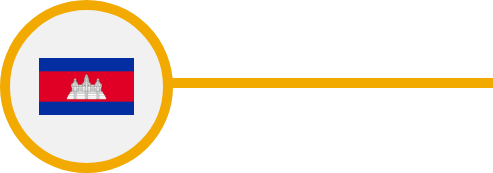BACKGROUND
Cambodia is one of the 30 high burden TB countries, with an estimated incidence of 520,007 302 (95% CI: 169–473) per 100 000 population in 2020 of which the NTP notified 291,000. [1]
While there have been successes in the treatment of drug-susceptible TB (DS-TB) and multidrug-resistant TB (MDR-TB) in Cambodia, case detection of all types of TB remains a challenge, with more than 40 percent of estimated cases remaining undetected. [2] Prolonged delays to TB diagnosis and treatment, and the burden of undiagnosed cases in the community continue to perpetuate transmission of the infection. [3]
It was estimated that 60% of Cambodia's population were infected with TB [4] As the population ages, the prevalence of active TB is projected to increase to 33% in the next decade. [5] It is thus pertinent to reach TB affected individuals and ensure prompt linkage to diagnosis and effective treatment to break the cycle of TB transmission. [3]
During the COVID19 pandemic, country’s TB case notification has remained broadly unimpacted in 2020, however, with the first wave hitting in later part of 2021, the TB case notification has been heavily impacted and the health system is now making efforts to revive its strong TB surveillance practices and reach back to the previous rates.
In 2015, through USAID TB care 1 Program, NTP introduced eTB manager as the MIS solution for recording and reporting of TB in the country commonly referred as Cam TBMIS.
It was one of the initial efforts by NTP to change user behavior for improved data completeness and accuracy. [6] Over the years the platform has been matured, stabilized and is nationally scaled. Other important health information system in Cambodia is SMS system for TB, a web-based text messaging system used to relay sputum smear test results on time. This helps in reducing the delay in treatment initiation and thereby achieving better treatment results and preventing further spread of the TB infection. [7]
It is empirical that technology penetration plays a vital role in enabling the evolution of information systems from paper to digital solutions. As per 2021 figures, about 125.8% of the population has a cell phone, and about 63.7% (2020) use smartphones. Internet penetration stands at 52.6% in the country. Enhancing digital inclusion in Cambodia is essential, given that access to reliable and affordable connectivity is a foundational step in maximizing the impact of deploying digital technologies on the government’s development aspirations. [8] , [9]
Under its National strategic plan (NSP) 2021-2030, NTP envisions early TB detection and treatment initiation by using more sensitive screening and diagnostic algorithms with an emphasis on reaching missing cases. Improving community and people-centered care and treatment approaches, public-private mix (PPM) MDR-TB, and TB in vulnerable populations (e.g., prisons, migrants, children, patients with comorbidities like diabetes or HIV co-infection). Based on these objectives, NTP has carved out strategic plan with series of new interventions to Strengthen NTP monitoring and evaluation (M&E) systems. Improving the quality of TB laboratory and diagnostic services at health facilities; strengthening active case finding (ACF) approaches; improving community TB care; strengthening the implementation of TB services in prisons and correction centers; and improving overall TB M&E and surveillance systems. [5]
Based on the multi-stakeholder discussions, interviews and independent research, and guidance from the National TB Program, this assessment report is an attempt to describe the current capacity and the identified gaps/ challenges in the digital ecosystem of TB surveillance. The report shares strategic recommendations for developing a comprehensive case-based TB surveillance system in the country while leveraging the existing infrastructure, in-house capacity, and assets.

STATUS OF CASE BASED TB NOTIFICATION
Currently the National TB program has been implementing primarily two tools for TB surveillance:
Version 2 of e-TB Manager, commonly referred as Cam TBMIS is National TB Program’s tool for collection of case-based data. All DR-TB data is entered directly into this system, while the records of DS-TB are maintained in manual TB registers at the TB centers/ hospitals, and further reported (case based) from the facilities (where functional) or district level, on a quarterly/monthly basis. The platform is envisioned for a national scale up and use in real time across all DS TB sites too, in a phased manner.
NTP identifies Cam TBMIS as a mandatory tool for TB notification at all sites where it is functional and with its national scale up and is aiming to enhance this to a more comprehensive record keeping system, which would be interoperable with national HMIS.
NTP is seeking help in building a TB MIS app which is embedded with the national TB MIS system and has an enhanced UI and dashboard features that will improve data entry at facility level. Starting from next year, the TB MIS app will be rolled out in 10 operational districts for case-based data reporting from each TB facility.
In the present transition phase for Cam TBMIS (i.e., until it is functional at all facilities), NTP’s traditional excel based reporting system is also parallelly functional in the country. NTP wants to eventually phase out the paper based records and wants to move to real-time case-based data entry.
In 2018-19, based on the Community, Rights and Gender Assessment (CRG) report, KHANA and the NTP introduced OneImpact community-led monitoring (CLM) platform. OneImpact empowers people affected by TB to access health and support services, claim their human rights, and identify and reduce stigma. Through an innovative mobile application, OneImpact CLM encourages and facilitates the participation of people affected by TB in all aspects of TB programming to activate a human rights-based, people-centered response. In doing so, OneImpact CLM supports people affected by TB to successfully complete their TB journey, while strengthening accountability and responsiveness in TB programs, with special attention to gender-related barriers to services and the experiences of key and vulnerable populations.

ELECTRONIC TB NOTIFICATION DATA COLLECTION AND USE
| TARGET | CURRENT SCALE | COLLECTION TOOLS | DATA TYPE | DATA USAGE | |||
|---|---|---|---|---|---|---|---|

National Level
|
Data Not Collected from this level
|
Cam TBMIS dashboard and line lists, Quarterly Reports | |||||

Provincial
level
|
25 | Data Not Collected from this level | Cam TBMIS dashboard and line lists, Quarterly Reports | ||||

Operational
District
level
|
103 | 103 | CAM TBMIS | Case Based | Cam TBMIS dashboard and line lists, Quarterly Reports | ||

Facilities
|
1400 (treatment centers, including referral hospital) | 100 health centers (own computer provided Ministry of Health) | CAM TBMIS | Case Based | Cam TBMIS dashboard and line lists, Quarterly Reports | ||

Community Level
|
Data not collected from this level | Data not used at this level | |||||

CASCADE OF CARE MONITORING
PRESUMPTIVE SCREENING
TB Testing
Treatment Initiation
Treatment Monitoring
Treatment Outcome
Contact Tracing






| KEY DATA VARIABLES | Yes/No |
|---|---|
| Demographic details (Age, DOB, Gender) | 
|
| Address and contact details (Country, Division, District, House address) |

|
| Geolocation (GPS coordinates of the household) | |
| Contact details (Phone number/Mobile number, WhatsApp, Email etc.) |

|
| Health Facility address |

|
| Type of health facility (Public, Private etc.) | |
| Site of TB (Pulmonary, Extra-pulmonary) |

|
| Type of diagnostic test (Microscopy, GeneXpert, TruNaat, CXR, etc.) |

|
| Date of test result |

|
| Drug susceptibility (DSTB, DRTB) |

|
| Treatment Regimen |

|
| Treatment start and end date |

|
| Co-morbidity (HIV, Diabetes, COVID-19 etc.) |

|
| Treatment monitoring/adherence |

|
| Treatment outcomes |

|
| KEY INDICATORS | Yes/No |
|---|---|
| Presumptive screening (proportion) | |
| Treatment initiation (proportion) |

|
| Treatment monitoring/adherence |

|
| Treatment outcome (proportion) |

|
| Spatial distribution of TB notification | |
| Age-group & sex wise aggregate numbers and proportions notified |

|
| Basis of diagnosis wise aggregate numbers and proportions notified |

|
| Type/site/drug resistance wise aggregate numbers and proportions notified |

|
| Provider source-wise aggregate numbers and proportions notified |

|
| Comorbidity wise aggregate numbers and proportions notified |

|
| Key-population wise aggregate numbers and proportions notified |

|
| Estimate/Target wise notification/treatment coverage (proportions) |

|
| Provider-type disaggregated treatment outcomes (proportions) | |
| Comorbidity disaggregated treatment outcomes (proportions) | |
| Key population disaggregated treatment outcomes (proportions) |
 Digital
(aggregated)
Digital
(aggregated)
STATUS OF ELECTRONIC CASE BASED TB SURVEILLANCE
Electronic System For Case Based TB Notification
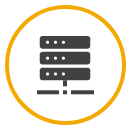
eTB Manager – Cam TBMIS
Lowest Unit For TB Notification Digitisation
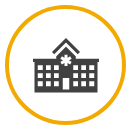
Treatment health centres
Stage Of Notification

Treatment Initiation
Level Of Access And Use Of TB Notification Data
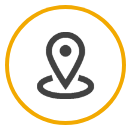
District level
Private Sector Notification

Private sector can only refer suspected cases to public facilities. No treatment provided
Frequency of digitization of TB notification

MDR-TB : Daily DS-TB : Monthly/Quarterly
Mode Of Follow-Up With Notified Cases
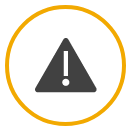
Manual follow-up- phone call, physical visit
Scale Of Implementation
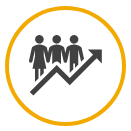
National roll out
Contact Tracing For TB Notified Cases
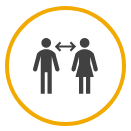
Cam TB MIS – TPT module
Multi-Channel Enablement

Mobile app usage for data entry being piloted (USAID commit project)
Govt. order for mandatory TB notification

None
PRIVATE SECTOR NOTIFICATION

Even though Private providers are sometimes the first point of contact for treatment, they are not yet treating the TB cases. As per NTP directives, they can only refer cases to public facilities. However, realizing this gap, NTP has now planned interventions under its NSP 2021-2030 to engage private providers in TB notification and treatment.
COUNTRY IT CAPACITY
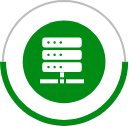
Country Server
Platform is hosted at CENAT (National Center for Tuberculosis and Leprosy Control) servers
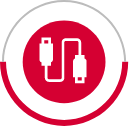
Interoperability
Data export functionality is available, but yet to be used for any integrations
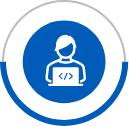
Country IT team
MoH and CENAT has developed the system with an external consultant, and is managed by in-house IT team
CURRENT RESOURCES AVAILABLE
Under USAID TB care program 1, NTP introduced e-TB manager for TB recording and reporting. USAID roughly invested USD 1 Million in piloting e-TB manager in MDR–TB facilities and providing hardware support to facilities. USAID funded for 11 desktop computers, 11 uninterrupted power supply units, 10 printers, and 12 internet modems were distributed to 9 health facilities and 3 laboratories that were piloting e-TB Manager. [6]
NTP Cambodia expanded eTB manager to DS-TB under USAID funded HIPA project. MSH facilitated its official's knowledge exchange visits to Bangladesh to improve and strengthen the overall systems. HIPA project supported the system uptil 2018. [6]
USD 12,000 (only the server) and 3 IT people currently available for managing the software- USD 50,000 per annum.

MILESTONES ACHIEVED AND ROAD MAP
2016
Cam TBMIS was developed
2012
Data entry in eTB manager scaled to 30 sites
2017
Pilot testing of Cam TBMIS
2018
Cam TBMIS scale-up
2019
100 Health center started directly using Cam TBMIS for data entry Development of TPT module- close contact tracing modul
2021
Addition of presumptive screening module; Pilot of mobile app use with tablets; PPM for 7 provinces and 14 ODs for referral; Expansion of TPT module - close contact of the Index case
2022
Integrate drug management and lab information management, integration with DataToCare

OTHER COMPLEMENTING DIGITAL TOOLS
| Purpose | Tools | Channel | Developed By | Supported By | Scale |
|---|---|---|---|---|---|
| Digital Adherence | Cam TBMIS | Web application | Palladium | USAID | Pilot |
| Logistic Management | Nil | NA | |||
| Laboratory Information Management | Cam TBMIS | Web Application | Palladium | USAID | To be rolled out soon |
| Community Led Monitoring (CLM) | OneImpact | Mobile App | Dure Technologies | Stop TB Partnership | Pilot |
| Contact Tracing | Cam TBMIS | Web Application | Palladium | USAID | Pilot (Being scaled up) |

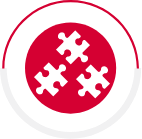

KEY CHALLENGES

Shared Hardware: NTP is using shared laptops/ desktops across the multiple programs which hampers timely data entry and hence it is usually delayed by a week or 10 days.

Data entry burden: Maintaining Parallel data entry manual records and digital records (for multiple programs), increases the workload on facility staff.

Lack of trainer manpower: With high attrition rate at the data reporting rates and inadequate training, there is a gap in manpower availability for entering data in TBMIS.

Data quality and Data Duplication: Currently, data entry points are limited (only OD TB supervisors and Hospital DEOs), and duplication of data is solely dependent on either the system prompts or manual audit of the data against aggregate data. NTP would like to link unique identifiers would help in patient tracking & monitoring.

Timeliness of Data availability: Majority of TB centers enter data on quarterly basis, very few centers enter data monthly or bi-monthly, or weekly basis. With such inconsistencies in frequency of data entry, data is not available real time for stakeholder use.

Maintaining uninterrupted internet availability at a few facilities is challenging.

NTP VISION
- ❖ Transition to a real time case-based data entry. A comprehensive record keeping system TB MIS which is interoperable with national HMIS.
- ❖ Improving the cascade of care by adding new modules (presumptive TB, Screening) and scale e-reporting of TB cases throughout the country using e- TB manager (TB MIS), aiming to make it functional by end of this year.
- ❖ NTP is seeking help in building a TB MIS app which is embedded with the national TB MIS system and has an enhanced UI and dashboard features that will improve data entry at facility level.
- ❖ Enhanced TB MIS application pilot roll-out in 10 operational districts for real-time case-based data reporting from each TB facility.
- ❖ Improving hardware support (with CSR engagements by computer companies) i.e., using multifunctional mobile tablets will be useful for taking forward field reporting.
- ❖ Building internal capacity of human resources for ensuring sustainability of software, system management and troubleshooting.
RESOURCES NEED
Based on multi-stakeholder discussions, country feedbacks and recommendations for full-filling country’s vision, we have put together an estimated investment requirements and areas needing support for provisioning of a comprehensive case based digital TB surveillance system.
Hardware and Infrastructure :

Mobile Devices (for data collection): Cambodia has 1200 TB Treatment units and to provision mobile device for every facility for case-based TB surveillance, USD 1,80,000 will be needed assuming USD 150 per mobile devices.

Tablet (for data use): Cambodia has 1200 treatment facilities and 103 districts and 25 provisions and to promote active data use, each district and region should be given a tablet which would cost roughly around USD 2,65,600 assuming USD 200 per Tablet devices.

Internet: In case WiFi is not available in each facility, then mobile internet cost of around USD 132,800 should be considered (assuming USD 100 mobile data cost for the entire year per facility, district and regional user).

Server: Based on the current volumes of new cases, Cambodia would need an investment of USD 20,000- 30,000 for next 3 years for server and server maintenance.
Note: Existing devices available through other health programs can be leveraged. In that case, the above-mentioned costing can be accordingly considered.
Software Development :

Based on various multi-stakeholder meetings and given the fact Combodia already have a strong foundation for DHIS2 aggregated system for TB, around USD 250,000- 400,000 should be budgeted for a comprehensive TB surveillance system and analytical dashboard for data use.
Capacity Building and Implementation :

After the software development, a dedicated pool of technical resources will be needed to support platform administration, data management and support. A team of 4-6 skilled resources attributing to a cost of around USD 48,000-72,000 per annum should be budgeted (or USD 144,000-216,000 for 3 years assuming USD 1,000 per month per resources). Additionally, reskilling of the current IT team should be budgeted.

Training: This would involve training material development and onsite and remote training of the trainers. Training sessions should be planned for each of the 495 districts, which could cost roughly USD 100 per district, amounting to USD 10,300 which will be further supported with e-Learning packages. Also, a dedicated trainer should be budgeted in case there is none.
TOTAL investment of around USD 1.5 – 2.0 million for 3 years will be needed on developing a comprehensive case-based digital TB surveillance system for Combodia.
Disclaimer: The above budget is a function of number of facilities, districts and regions and expected volume of data. This only provides a ballpark figure of what is needed in terms of budget

Recommendations
Following are some of the key recommendations suggested based on the findings of this assessment of country’s digital ecosystem and infrastructure:

Strategic Costing Plan
As a first step it is important for the country to create a comprehensive costed action plan for development, implementation and scale up of the TB case based surveillance system.
Based on NTP’s vision and the recommendations for improvements, the plan should clearly define targets with actionable interventions and funding requirements supported with a detailed work plan along with timelines. The plan will help the country to assess and monitor the progress to ensure that any risks can be duly mitigated.
Tentative timeline: Month 0-1

Device Procurement
One of the limitations highlighted by NTP is the need to improve the data collection processes at the facility level. To streamline this, procurement, distribution and maintenance of the required data entry equipment like laptops, mobile/tablet devices should be done on an urgent basis. Improving the current infrastructure at the facilities is crucial for a complete transition to digital notification.
Tentative timeline: Month 0-3

Enhancement of Case Based Notification systems
The NTP has already established Cam TBMIS as the national notification platform and has the required infrastructure in terms of database and deployment. It has also built the eTB manager expertise and capacity which acts as a strong foundation for executing the vision of implementing a comprehensive and integrated real-time case-based TB surveillance and notification system.
It is recommended that this existing capacity is leveraged for expanding the Cam TBMIS app (in the enhanced version). The application should be further expanded to include monitoring of the entire continuum of care for both DR and DS TB, including presumptive screening, referral, treatment initiation, treatment adherence & outcome, and contact tracing in real-time.
The solution architecture should support adding the additional components in phases, supported with versioning to ensure seamless upgrades and continuity.
Some of the existing program templates being used by other countries such as WHO’s prevent TB tool or other tracker-based systems can be explored for fast-tracking the software development processes.
Tentative timeline: Month 0-12

Data Integration
The NSP (2021-2030) clearly highlights the importance of strengthening the TB Notification information system for improving all the TB service provisions.
Cambodia is using version 2 of e-TB manager for TB notification commonly referred as Cam TBMIS. To ensure that there is a seamless integration of data with Cam TBMIS, from multiple data sources like Lab information systems, CLM platform and other data sources like excel files maintained at facilities without any data loss, the data upload / export API should be explored.
There may also be some other distributed data collection systems and processes which are existing, and it might be difficult to replace them, in such a scenario data can be extracted, transformed and loaded into the central database.
While transformation and data export options offered by the current systems can be used for this other source ETL tools over Postgres DB and/or WHO powered XMart [10] which can be installed within the current environment can also be considered.
Tentative timeline: Month 6-12

Mobile app
Implementation of data collection via mobile app to ensure ease of use and real time reporting
NTP is seeking help in building a TB MIS app which is embedded with the national TB MIS system and has an enhanced UI and dashboard features that will improve data entry at facility level. This would help in tackling challenges like inconsistent data connectivity/network issues which delays reporting of cases, and an inconsistent availability of hardware for data entry. One effective way to overcome this is to support the current data collection processes by introducing a mobile application for the health facilities.
As is already envisioned by the NTP, a pilot on using android technology (mobile app) to encourage real time data entry and its further scale-up is required for mitigating the infrastructure and internet challenges at the facility level.
Other advantages of a mobile application include better performance, effective use of device features like in house system updates, offline data entry, usage of location, security measures and tracking user patterns and issue log mechanisms and other analytics measures.
Several mobile solutions for real time case-based notification can be explored for local adaption and building the mobile counterpart for eTB manager. Open source technologies like DHIS2 Mobile App, ODK and KOBO are some notable examples. [11]
Tentative timeline: Month 0-12

E-Learning
Packages to train health professionals on eTB manager use and workflows.
Any national scale roll-out will have its own capacity and training challenges which requires development of a comprehensive eLearning module allowing all health staffs involved in data collection process for training not only on the eTB manager application but also on the latest manual of procedure and continued medical education on TB care.
To address the challenges with periodic training of facility level staff to orient them on using eTB manager for direct data reporting, the MOH must engage in development of a comprehensive eLearning module for app training.
Training tools like Moodle [12] built on standard LMS framework can be reviewed for application rollouts.
Additionally, for training and updates on the latest manual of procedure and continued medical education on TB care, modules can be developed for TB Health providers, administrators at facility and district level to develop and enhance M&E competencies for ensuring a consistent program oversight, especially for the case-based tracker roll out within the existing applications.
Guide TB platform developed by WHO Philippines is a good example of eLearning module for health staffs involved in TB care.
Tentative timeline: Month 0-3

Capacity building for application maintenance
Planning for capacity building includes workforce assessment, ranging from ICT professionals to health workers providing care services. Since the application requires regular updates and adaptations, the system support team requires trained personnel on the technology stack in use.
Strengthening the NTP team with trained system administrators will help in reducing costs (in seeking technical support) and improving and expediting the planned implementations.
Tentative timeline: Month 6-24

Contact tracing application implementation
To strengthen the TB surveillance efforts of the country and for reaching out to all TB positive individuals, an active focus on contact tracing becomes crucial. The standard guidelines for household screening can be incorporated as a module in the national TB notification tool and be implemented to fast track the country’s efforts to eliminate TB and target the initiation of preventive treatment for all TB contacts.
Tentative timeline: Month 6-12

Patient Interactive Systems
Establishing a direct and secured mechanism for engaging with patient has potential for drastic improvements in tracking lost to follow-up patients.
Auto generation of notification and messaging by the system through communication channels like Social Media channel, IVRS and SMS outbound messages should be explored. Open source applications like Open MRS can be used for these activities. [13]
Tentative timeline: Month 6-24

Data Use
The NTPs plan clearly emphasizes on the importance and need for improve data use. This can be made possible by making case-based TB data across systems more real time and useful.
Building on the current eTB manager and DHIS2 visualization modules that offer a comprehensive dashboard for reviewing of program and data indicators, additional features of pivot table , event reports which support dimensions , data aggregation reports and individual line lists are extremely useful.
To strengthen and expand the data visualisation scope and making effective use of data for predictive modelling, data science and for advanced analytics, it is recommended to use best of the breed tools like Tableau , Power BI which offer these features. APIs can be generated and connected with these applications, and these can be used as an extended analytical component of the data analysis framework. [14]
Tentative timeline: Month 6-12

Data Quality
As part of the standard practice, the application(s) / solutions should follow a set of standard data quality mechanisms or the Data Quality Assurance (DQA) framework which would help in improved data credibility and use.
UIC Code : Having a centralized Unique Patient ID system or leveraging existing national ID supported with an improved search functionality can help drastically reduce the duplication of case-based records.
This should be generated automatically through the new case-based TB surveillance system that is already being planned.
Data access control is one such DQA measure that will regulate user’s access to only relevant metadata. It will involve the principle of least privilege (POLP), i.e., user’s access will be determined based on their role in the project. POLP will define and limit what data they have access to and who has that access.
Tentative timeline: Month 6-18

Strategic Technical Recommendations
Application Upgrades including Server Augmentation & Infrastructure Upgrades : To make sure that systems implementation and scale up of application is supported well, the key need is to have a long-term strategic plan that would cover the technical and operational objectives.
The strategy recommended would cover the following core areas
✓ Technical Upgrades: Based on the architecture, the upgrade would be done with the database, a middleware system, the operating system or the hardware.
Additionally, the architecture should support the integration layer which would be needed for data exchange with other national / external systems. The technologies that need to be brought in and the areas of inter-connection need special focus.
Apart from this version 2.34 also supports compliance to GDPR standards and offers more controlled data encryption practises. [15]
✓ Performance Optimisation & Testing : To support the national scale up and implementation strategies it is very essential to have system(s) and application testing done to enable a reliable platform and which also helps in architecture updates and augmentation.
Automated System and Application Testing tools like Selenium and Appium can be used. Load Testing tools which helping in database sizing and planning need to be adapted for effective planning . [16.1], [16.2]
✓ Application & System Security Audit
To strengthen the current systems framework and ensuring long term sustenance it is important to have regular evaluation of the security of the information and systems by measuring how well it conforms to an established set of criteria.
These would also include developing a framework which should outline policies in line with recommended standard policies like HIPAA [17.1] , [17.2] to cover
• Patient Data Management
• Server & Infra guidelines
Apart from application measures offered by eTB manager/ Cam TBMIS for patient data security, hosting solutions offered from Azure also cover these as part of their deployment options which can be considered as part of systems hosting. [18]
ACKNOWLEDGMENT
We thank the Line Director National TB and Leprosy Program, Dr. Huot Chan Yuda and the entire team for participating and engaging in the assessment. We would also like to extend our gratitude to Dr. Tieng Sivanna for providing valuable insights into Cambodia’s vision for creating an advanced case-based TB surveillance and notification system.
CONTACT DETAILS
National centre for
Tuberculosis and Leprosy
Control (CENAT)
16b St 288, Phnom Penh, Cambodia
Telephone : +855 23 219 274, +855 23 224 971
Email : info@cenat.gov.kh
REFERENCES
- Global Tuberculosis 2021; World Health Organization : https://www.who.int/teams/global-tuberculosis-programme/tb-reports.
- Spatial and temporal projections of the prevalence of active tuberculosis in Cambodia : https://gh.bmj.com/content/4/1/e001083?ijkey=680c2a9bf441bc81803ce4310067f85376962a36&keytype2=tf_ipsecsha.
- Acceptability of active case finding with a seed-and-recruit model to improve tuberculosis case detection and linkage to treatment in Cambodia: A qualitative study : https://www.ncbi.nlm.nih.gov/pmc/articles/PMC6605634/.
- Determinants of delayed diagnosis and treatment of tuberculosis in Cambodia: a mixed-methods study : https://www.usaid.gov/sites/default/files/documents/Cambodia_Narrative_TBRM21_TBDIAH_Version_Final.pdf.
- Cambodia Tuberculosis Roadmap overview, Fiscal Year 2021 : http://www.btrc.gov.bd/content/mobile-phone-subscribers-combladesh-january-2021.
- Process of implementing e-TB Manager, 2008–2016: a summary of 10 countries : https://pdf.usaid.gov/pdf_docs/PA00D5R8.pdf
- TB CARE I Cambodia , Quarterly report (april-June 2013) : https://pdf.usaid.gov/pdf_docs/PA00M4BQ.pdf
- Data reportal, digital 2021: Cambodia : https://datareportal.com/reports/digital-2021-cambodia?rq=cambodia
- Cambodia Digital economy : https://www.phnompenhpost.com/financial/cambodias-digital-economy,
- WHO Xmart : https://portal-uat.who.int/xmart4/docs/general/Overview.html
- DHIS2 Mobile App : https://dhis2.org/android/
- Application Training Tool : https://moodle.org/
- OPEN MRS : https://openmrs.org/
- DHIS2 Power BI : https://community.dhis2.org/t/dhis2-to-powerbi-connector-is-ready-check-out-the-video-test-it-use-it-and-give-us-feedback/37043
- DHIS Security : https://dhis2.org/security/, https://www.selenium.dev/
- Performance Tools ( Selenium , Appium ) : https://appium.io/, https://www.selenium.dev/
- HIPAA Compliance Framework : https://www.hhs.gov/hipaa/for-professionals/security/laws-regulations/index.html , https://www.hipaajournal.com/considered-phi-hipaa/
- Azure Hosting Services : https://docs.microsoft.com/en-us/azure/compliance/offerings/offering-hipaa-us
